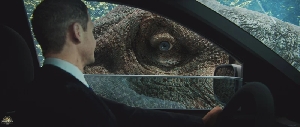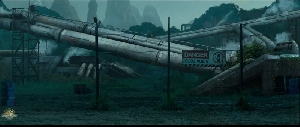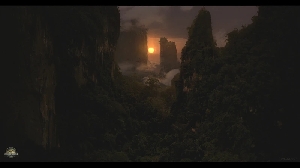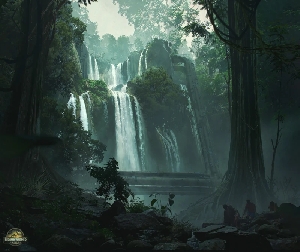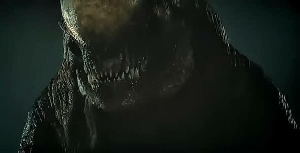Spinosaurus and Oxalaia
Dinosaurs Forum Topic

Lord of the Spinosaurs
MemberCompsognathusDec 6, 201410261 Views18 RepliesOk, ok, I have sparked up a lot of debate with my new thread, "My Top 10 Largest Theropods".
Before I begin, I find it very unproffessional that a lot of us are saying that Oxalaia is just a South American version of Spinosaurus, have we not learned our lesson from Tyrannosaurus and Tarbosaurus?
OK, so lets begin with my evidence. First of all, if you look at the snout of Oxalaia you see very little pits within it, Spinosaurus has a lot of pits in its snout, in fact it seems like Suchomimus and Baryonyx which were probably bipeds (unlike Spinosaurus) have more pits in there snouts.
Take a look at this:
http://1.bp.blogspot.com/-lKZpPGNA-LI/T57QIpfouJI/AAAAAAAAL7g/4dPYwnl3J5U/s400/Oxalaia_quilombensis-sn.jpg
As for its nostrils, one of you guys said that Oxalaia's nostrils were farther back than Spinosaurus, we have not found a whole snout of Oxalaia so we don't know that for sure. It seems like there are two likely candidates for the nostrils. One of them is at the end of the snout, and you can see what looks like to be part of the nostril on the other smaller chunk of the snout.
Personally I think that having less pits in your snout and having your nostrils moved towards the end of your snout (though this isn't comfirmed) would not be very helpful if Oxalaia was a more aquatic and qudruped dinosaur like Spinosaurus.
As for the legs, we don't have any of Oxalaia, though we can look at other South American Spinosaurs, like Angaturama (which may be the same as Irritator). You see, we have found the hind legs of Angaturama and they seem to be like that of a normal Theropod unlike the hind limbs of Spinosaurus. Ok, ok, we did do the sme thing with Spinosaurus and we gave Spinosaurus the legs of Baryonyx, and we should have learned from that. Though Angaturama is different.
You see, in the family Spinosauridae there are two subfamilies, Spinosaurinae and Baryonychinae. Spinosaurus, Oxalaia and Angaturama are in the subfamily Spinosaurinae while Spinosaurs like Baryonyx and Suchomimus are in the subfamily Baryonychinae. This makes Angaturama "safer" to use I guess you could say. And Angaturama may just be a juvenile Oxalaia, though that is not too likely.
This shows what bones they have found of Angaturama:
http://fc03.deviantart.net/fs71/f/2011/086/b/d/bdb77a4d623fa7c528c0120c7979c925-d3cmxb2.png
In my opinion Oxalaia would be a very muscular animal, very similar to the "old Spinosaurus". I also think Oxalaia would have pretty dense bones (not as dense a Spino's, but still dense). Personally, being very muscular would not help the "new Spinosaurus" with its aquatic lifestyle though it would be more useful for my reconstruction of Oxalaia. So I PERSONALLY put Oxalaia at about 15 meters and 11 tons, in my opinion the largest theropod of all time.
Do I think I will convince any of you? No. I expect to get some criticism from a lot of you. I just want to state what I think the evidence WE HAVE is pointing to. If we find more material of Oxalaia will my opinion change on this Dinosaur? Probably. I'm just going on what we have, how am I supposed to know of "evidence buried in the ground". People say Oxalaia evidence for Oxalaia looking like Spinosaurus is the fact that they are closely related. I don't see that as evidence.
Also, I am going to say something else too. A lot of you guys put T-Rex at 8-10 tons (I personally think it is 8 tons), while most sites and some Paleontologists put estimates at about 5-6 tons. What I am saying is that if you think that my estimates for Oxalaia are oversized and have almost no sources, you should have been complaining a long time ago. I'm not saying that 8-10 tons for T-Rex is wrong, I agree with you guys that 5-6 tons is and underestimate for T-Rex, and I feel the same way about Oxalaia.
Anyways, tell me what you think below. I don't expect to be getting positive feedback, though try to stay kind and not be rude, especially some of you...
There is no such thing as a pure predator. A meat-eater is eit
Replies to Spinosaurus and Oxalaia
Hey Guest, want to add your say?
Are you an avid Jurassic World fan looking for a dedicated online community of likeminded fans? Look no further! Create your own profile today and take part in our forums and gain XP points for all the content you post!














